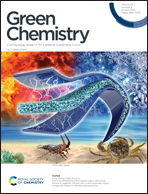Salt-thermal methods for recycling and regenerating spent lithium-ion batteries: a review
Abstract
Spent lithium-ion batteries (LIBs) have gradually become an indispensable raw material to regenerate new LIBs and close the material loop. Hence, the development of efficient recovery methods with minimal recovery cost, chemical and energy consumption, and secondary waste emission is essential. Among the various recycling methods, the salt-thermal method has emerged as an efficient approach, which involves the use of inorganic salts as the agent and thermal energy, to drive the desired reactions such as oxide-to-salt conversions and crystal healing with the aim to extract valuable metals from spent LIBs. Unlike pryo-carbothermal reduction methods using a carbon source as the reductant and hydro-leaching methods using inorganic/organic acid as the leaching agent to recycle spent LIBs, the salt-thermal process usually converts spent LIBs materials to Li-rich salt and/or lithium-deficient oxides, which can be easily separated or reutilized. Salt-thermal methods can be used to separate active electrode materials from the current collector, selectively leach valuable elemental metal from cathode materials, and regenerate anode graphite/cathode materials (LiCoO2, LiNixCoyMnzO2, and LiFePO4). Herein, we review the-state-of-art technologies for recycling spent LIBs by salt-thermal approaches such as separation of electrode materials, roasting, electrochemical separation, and regeneration. Furthermore, we summarize the benefits and drawbacks of using inorganic salts (sulfuric, sulfate, chlorinate, ammonium, carbonate, and alkali metal salts) for recycling spent LIBs. It should be noted that some important papers may have been overlooked given that the development of this field has been rapid in recent years. Overall, we hope that this review can make contributions not only in academia but also in the LIB industry.

- This article is part of the themed collections: 130th Anniversary of Wuhan University and 2023 Green Chemistry Reviews


 Please wait while we load your content...
Please wait while we load your content...